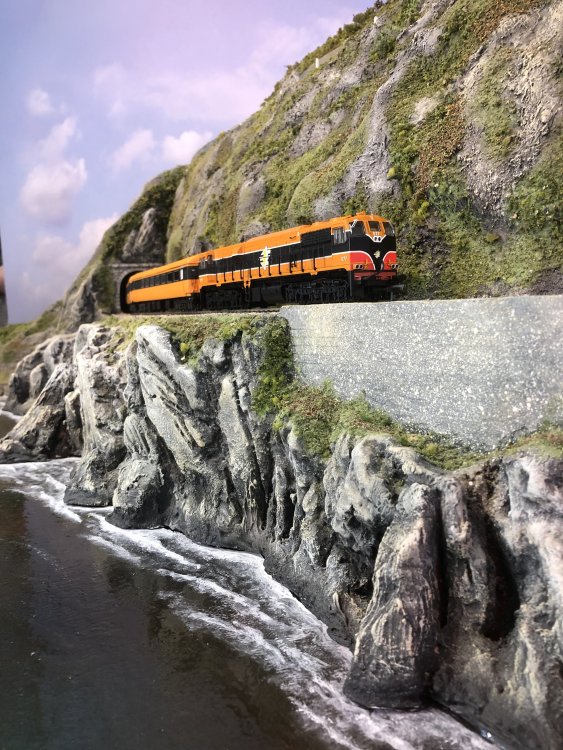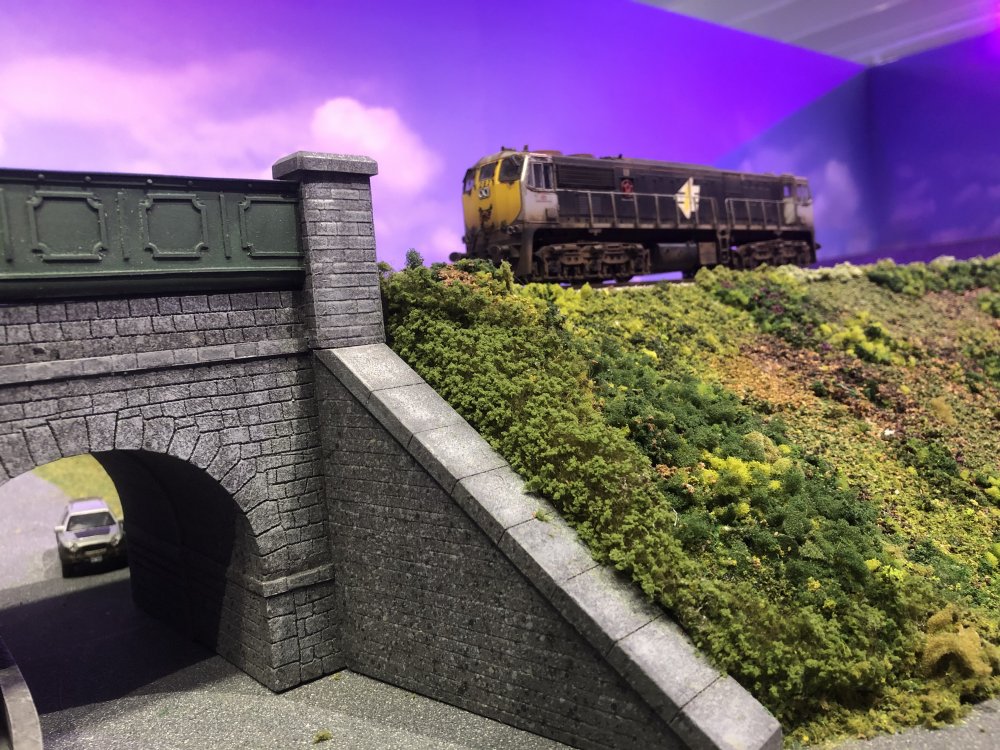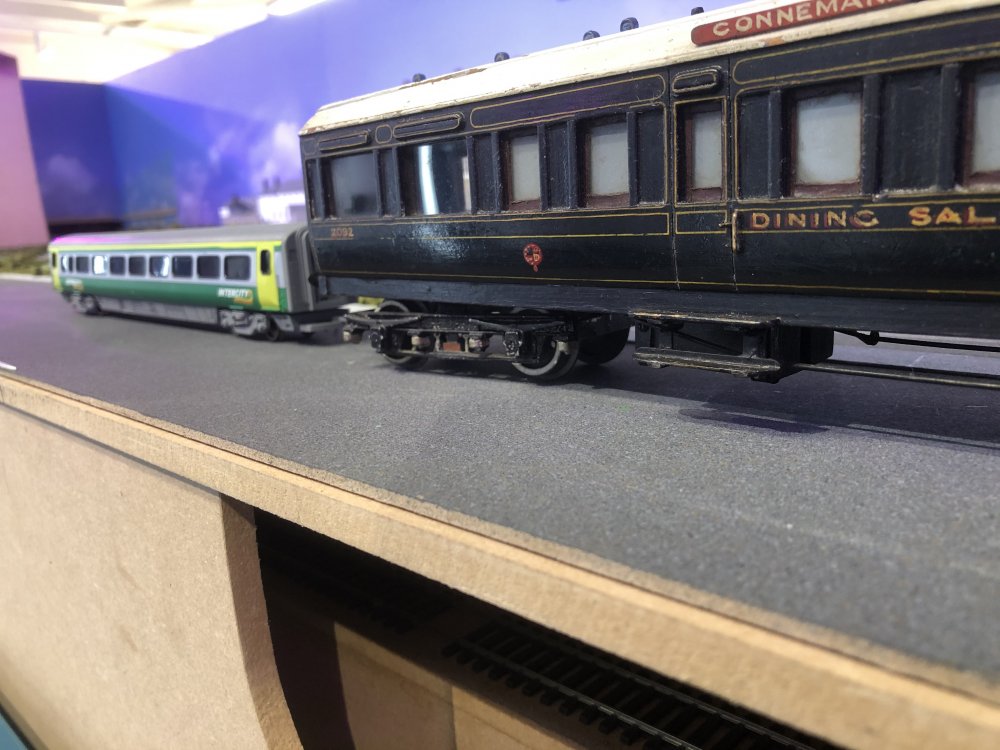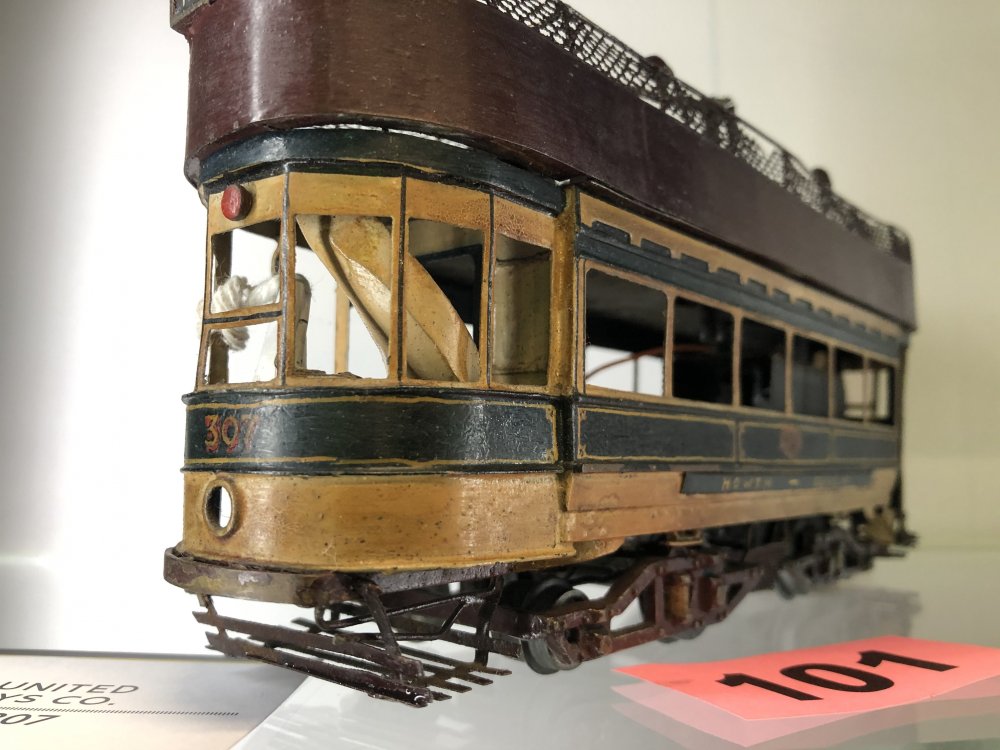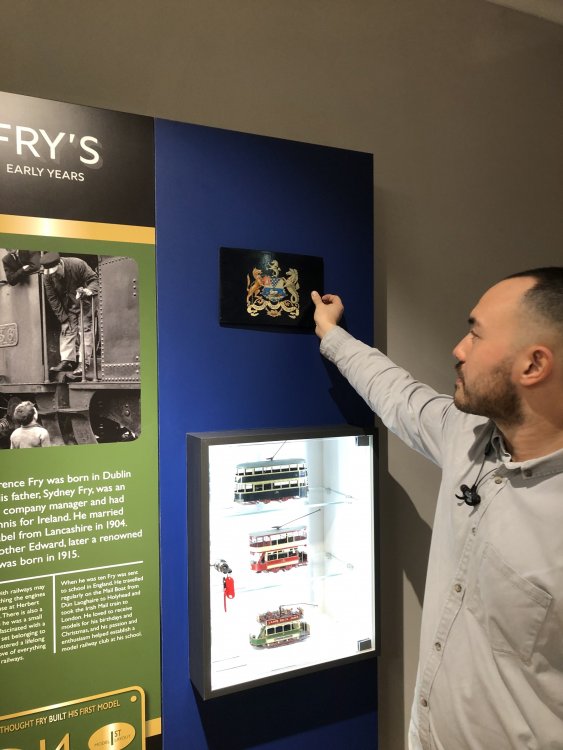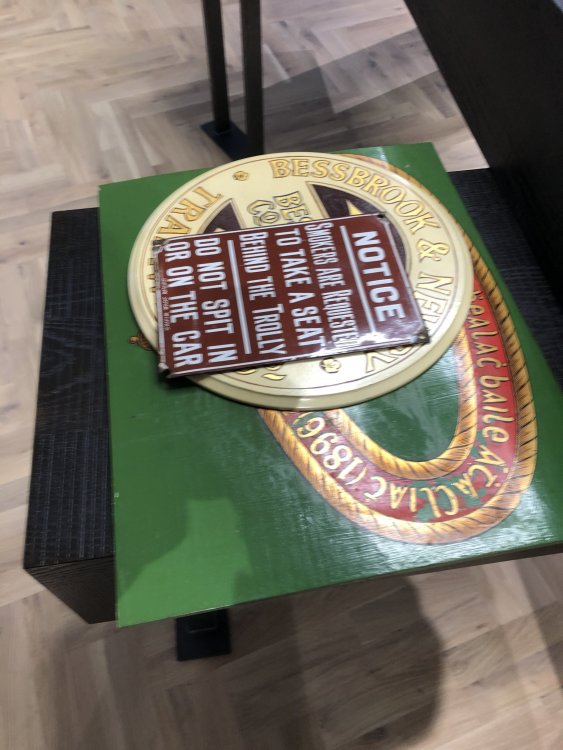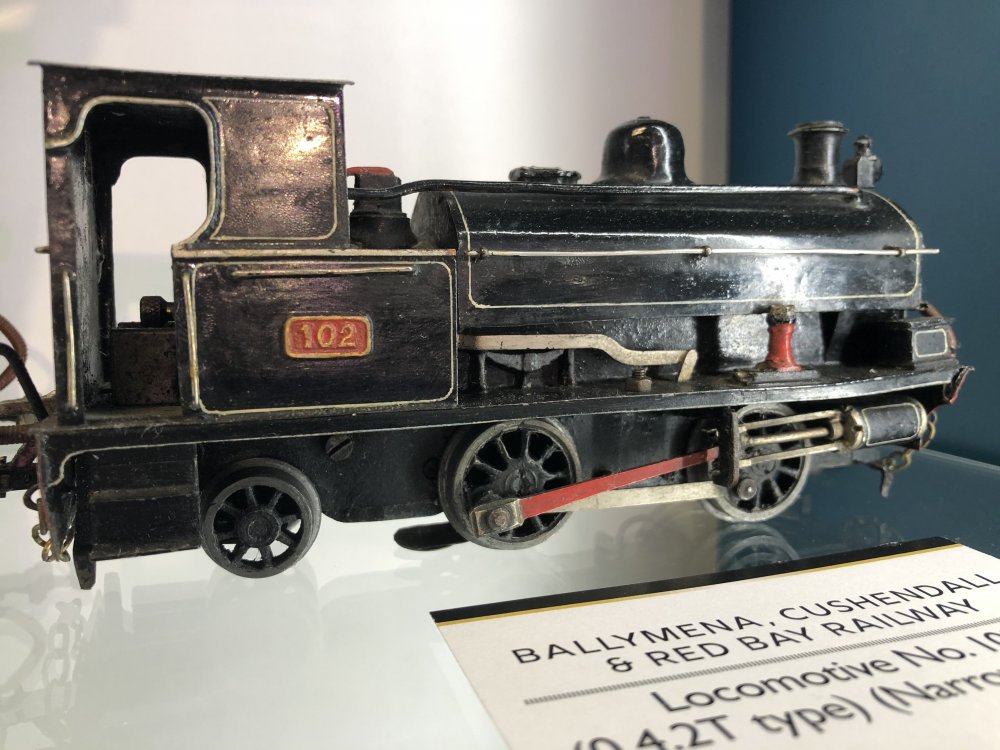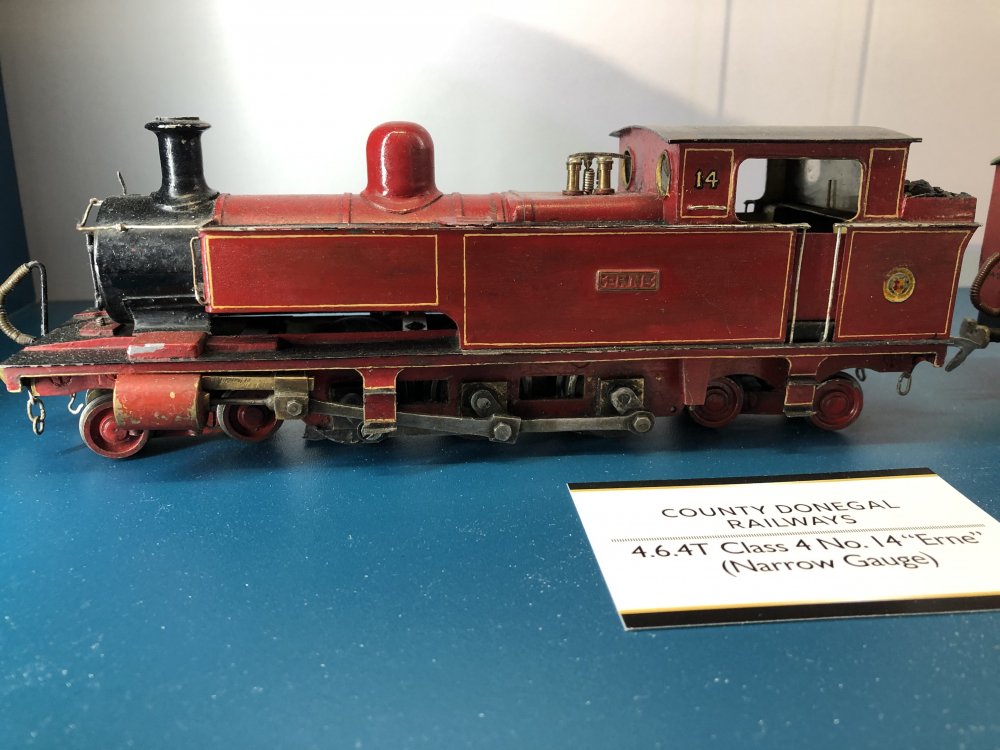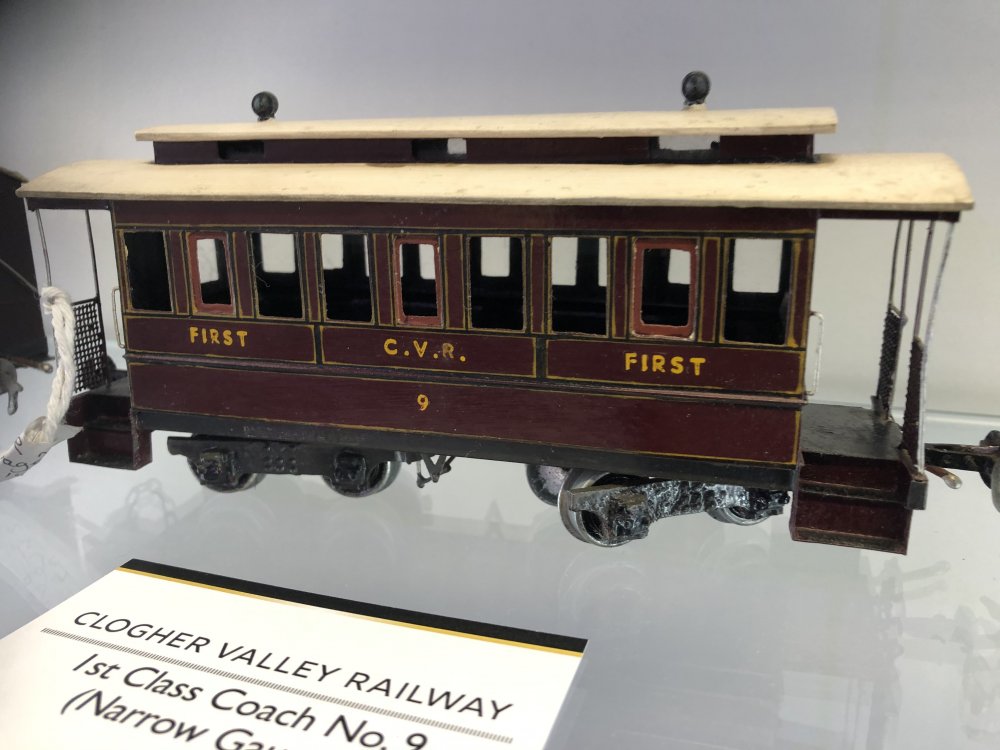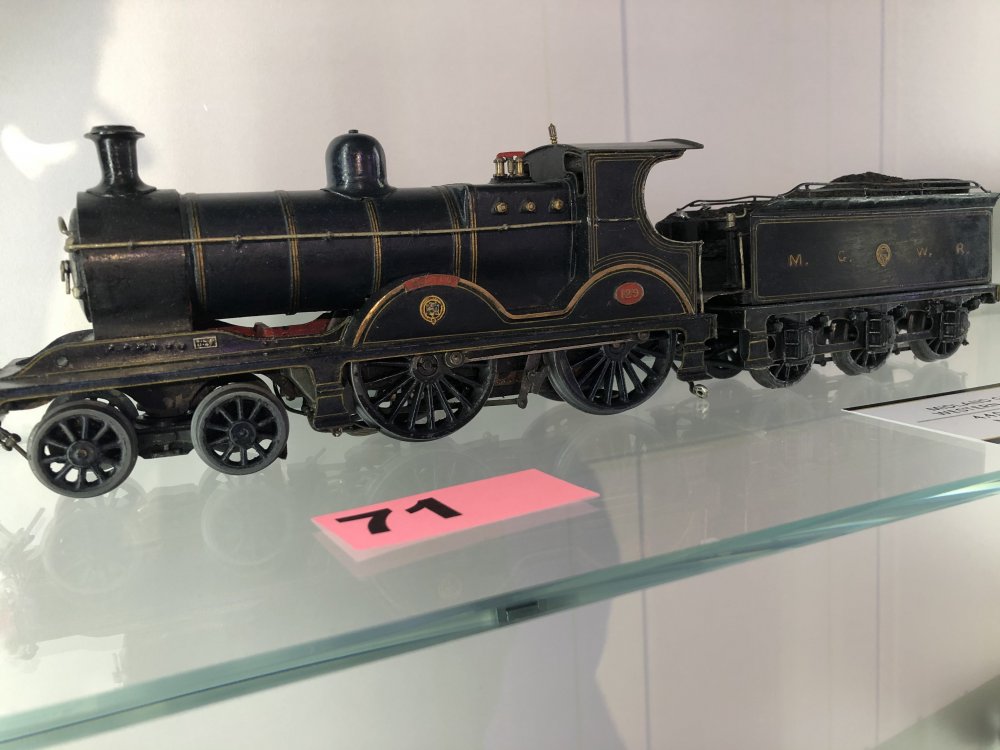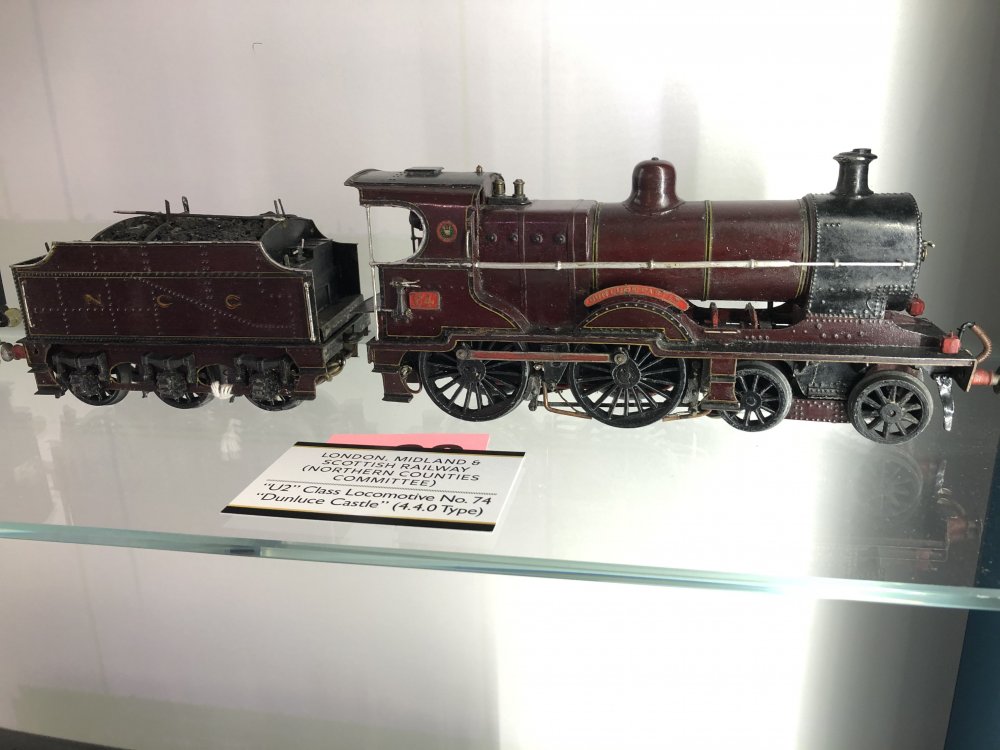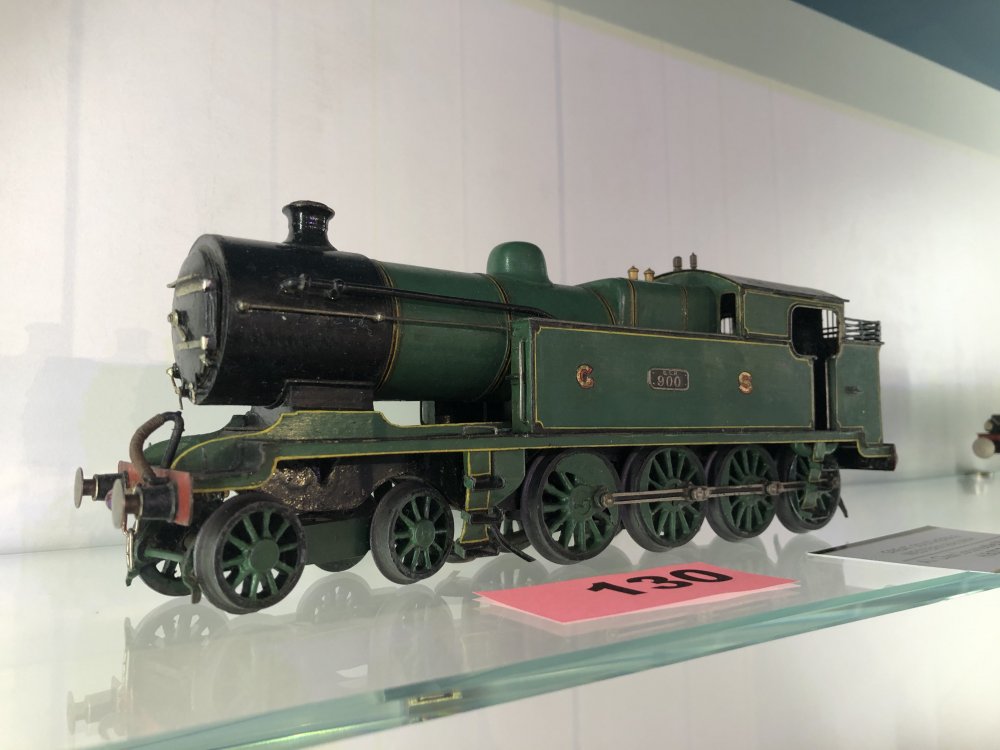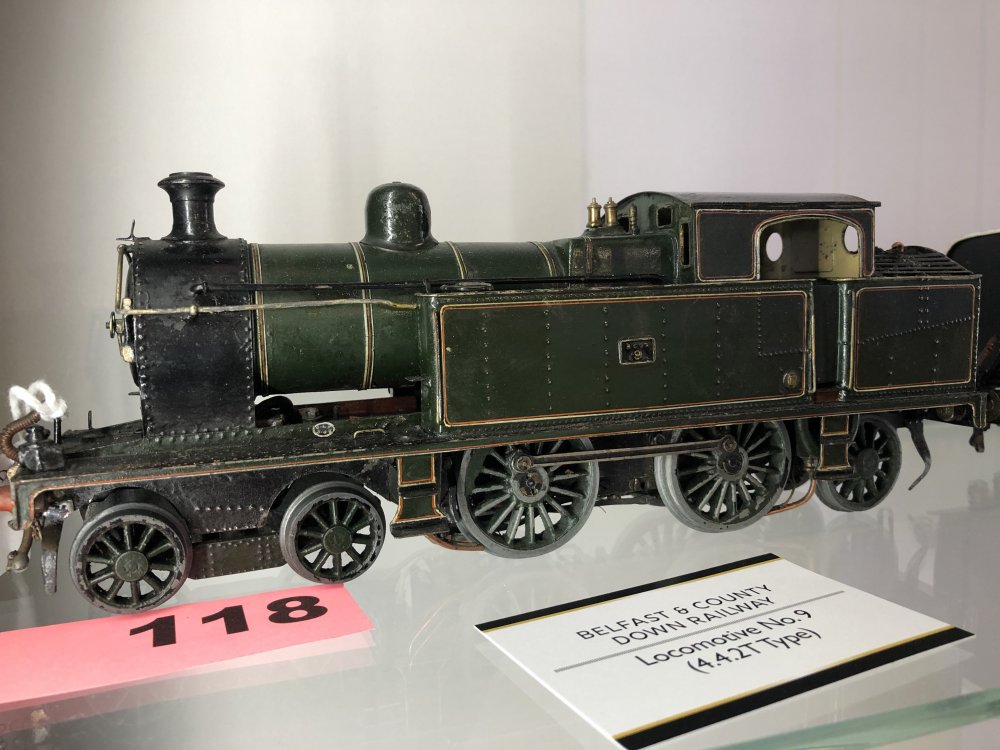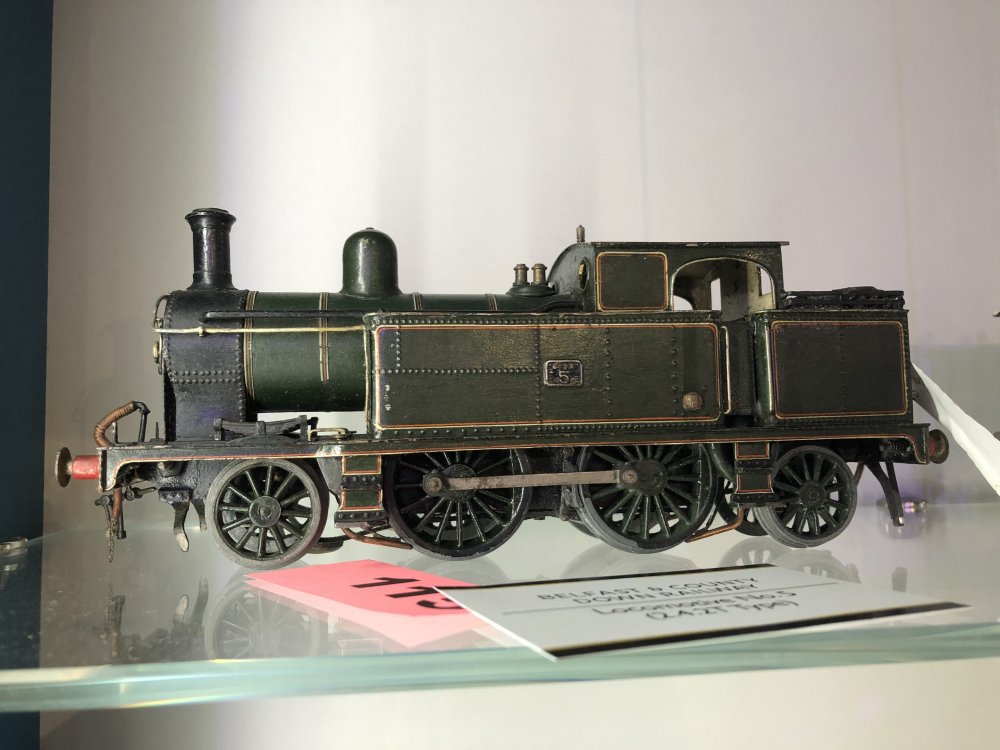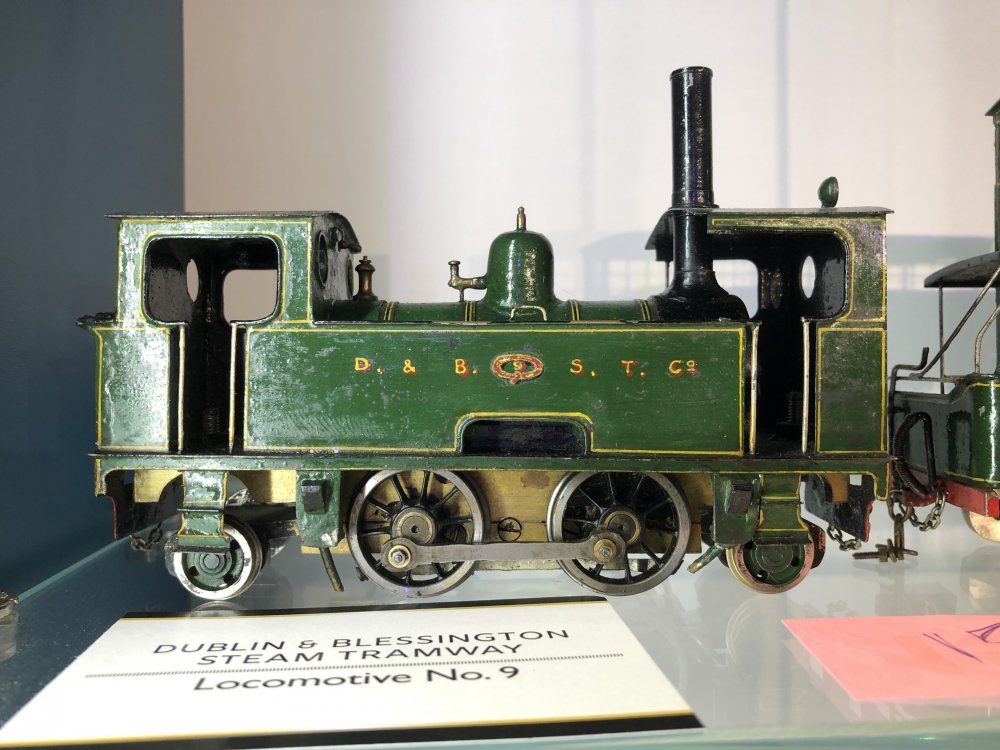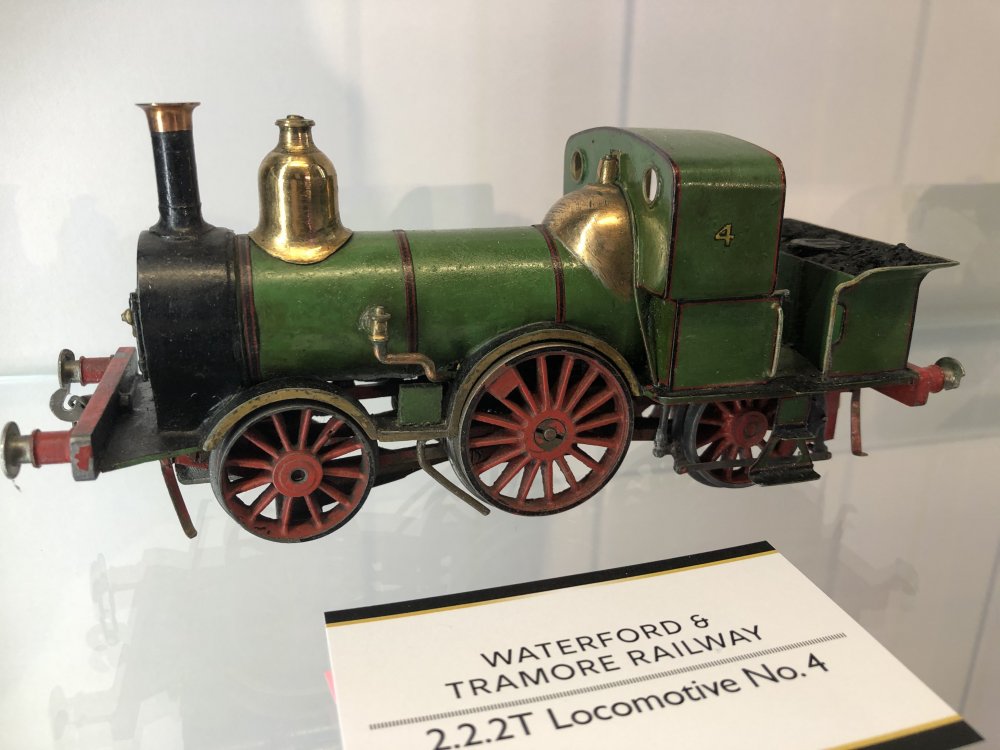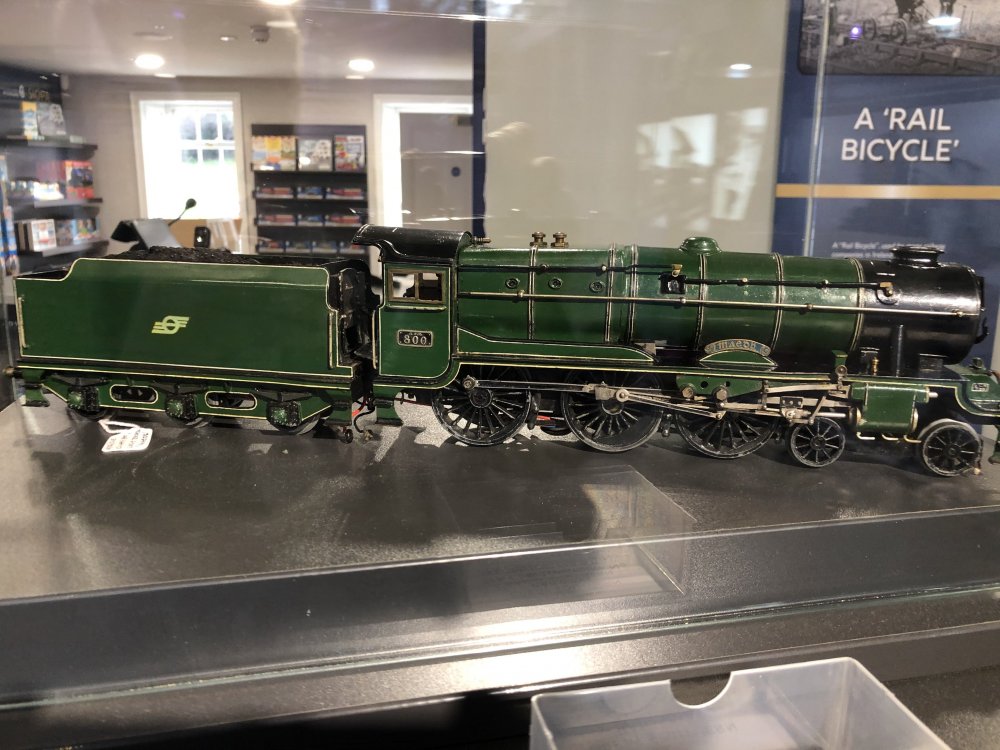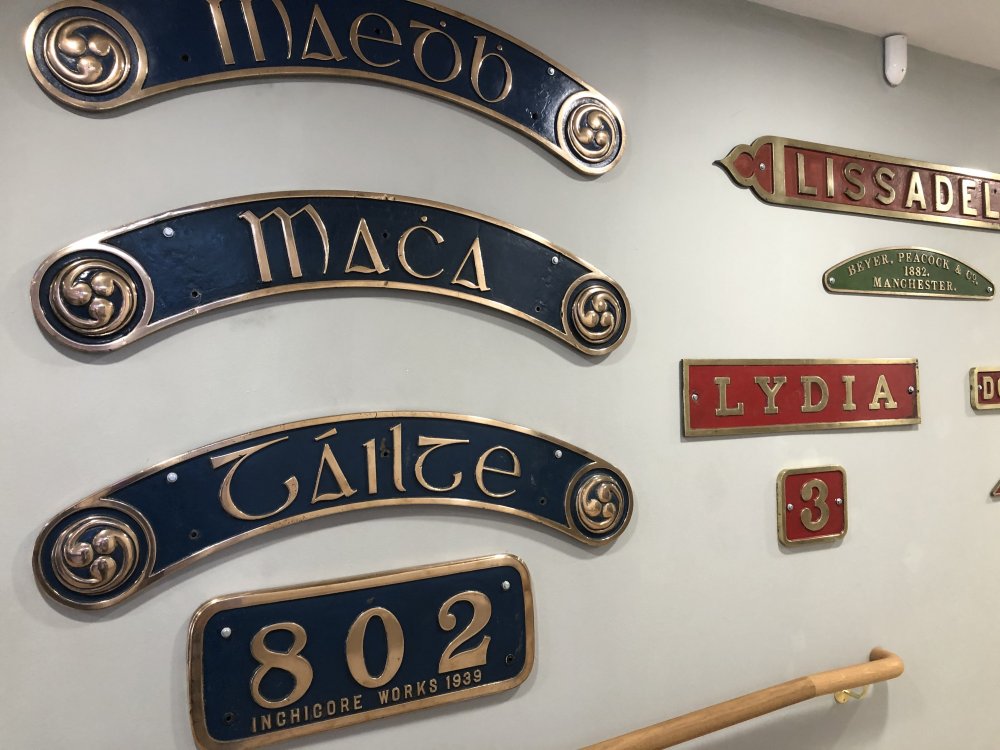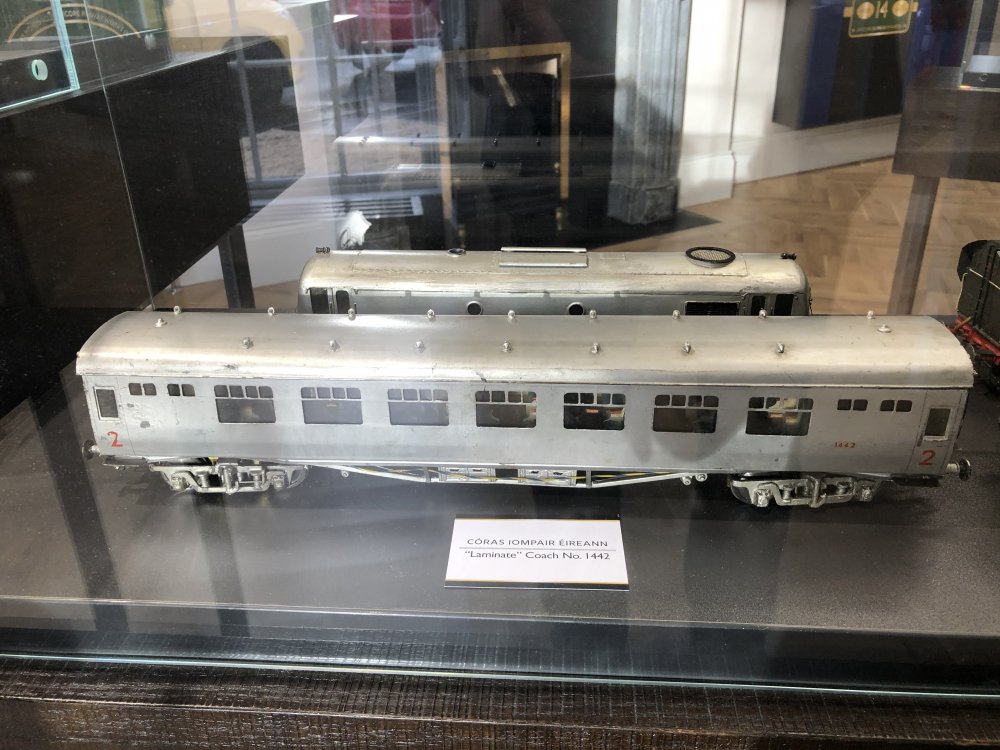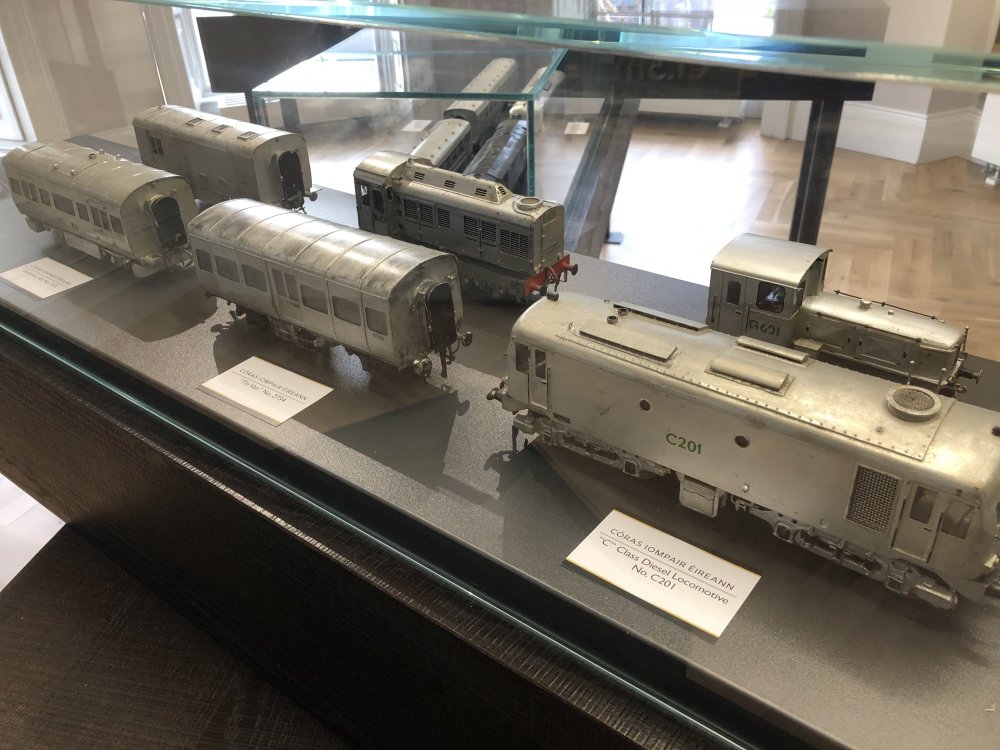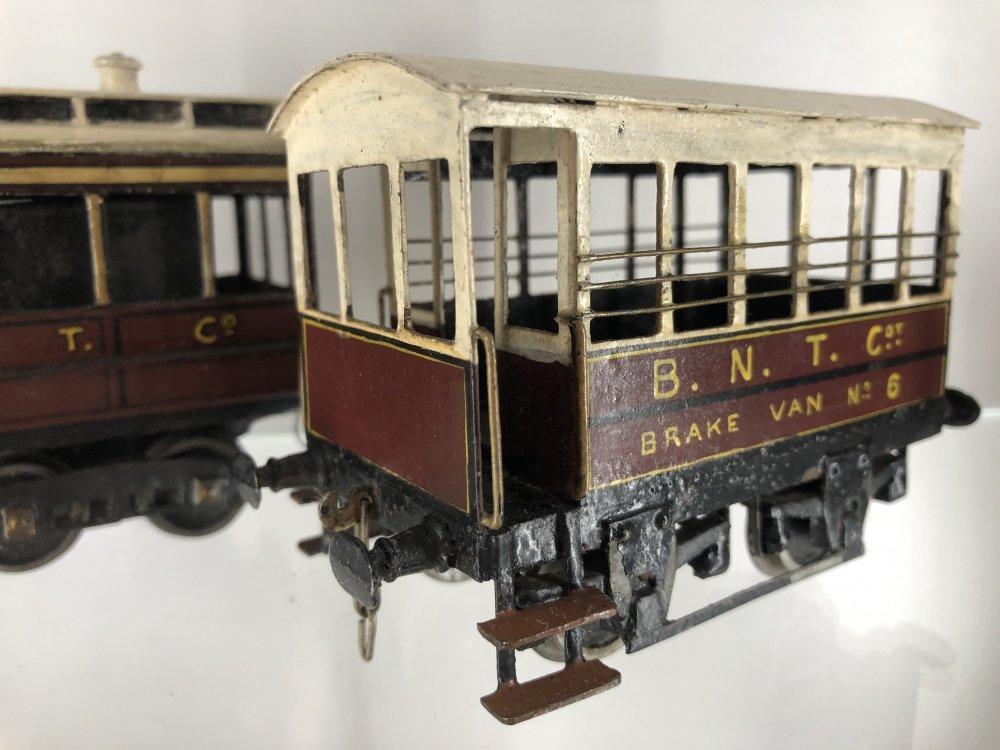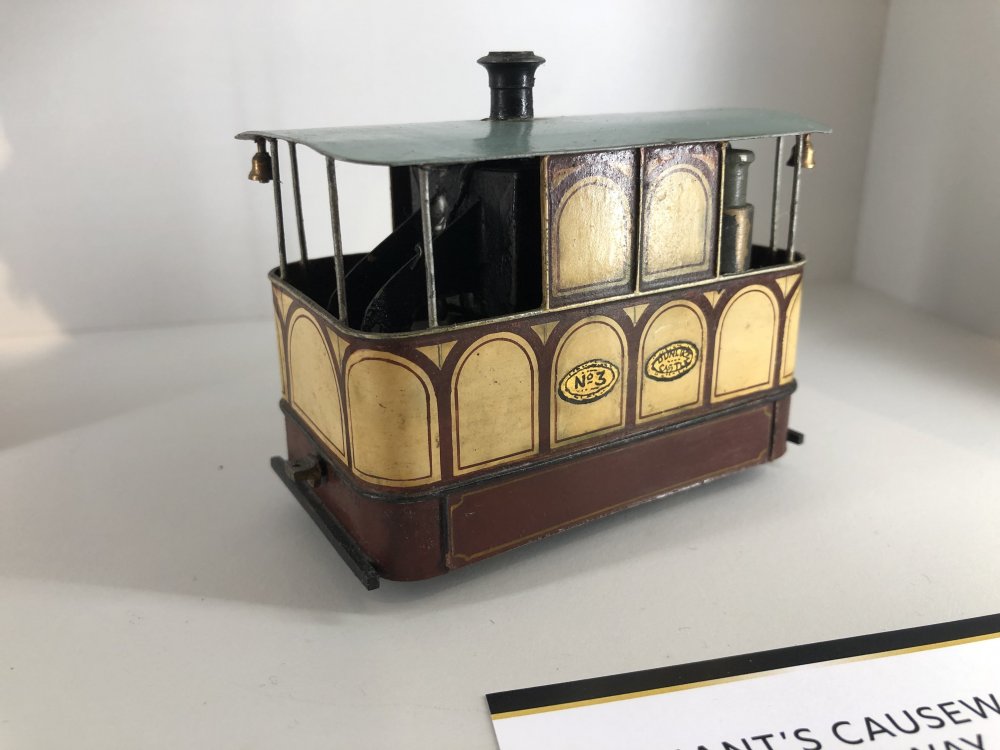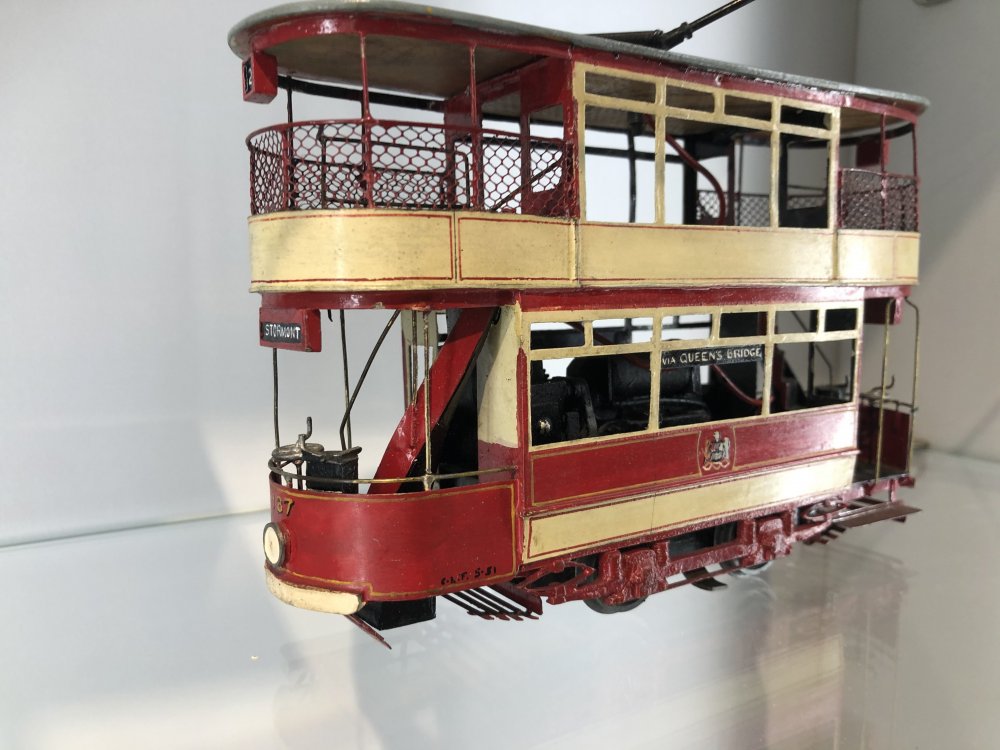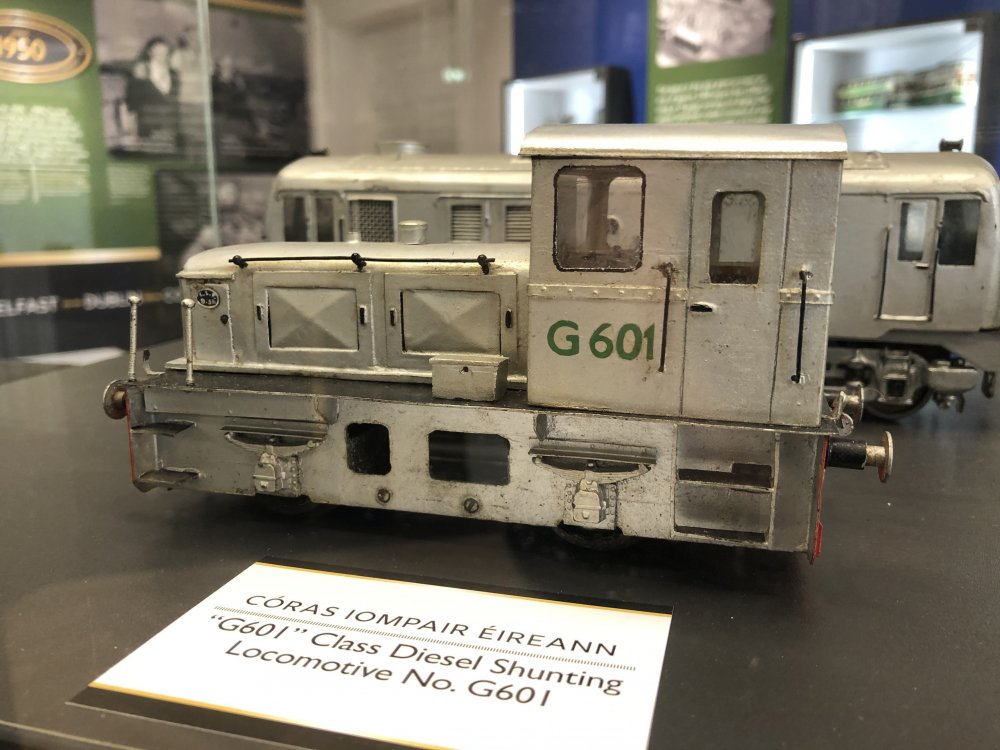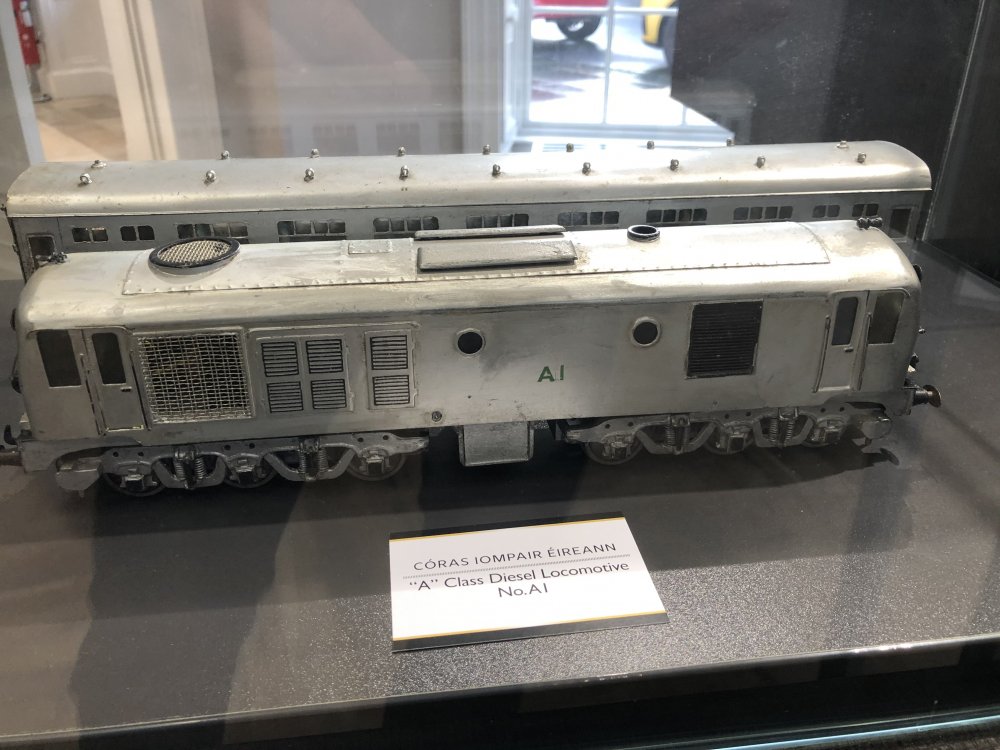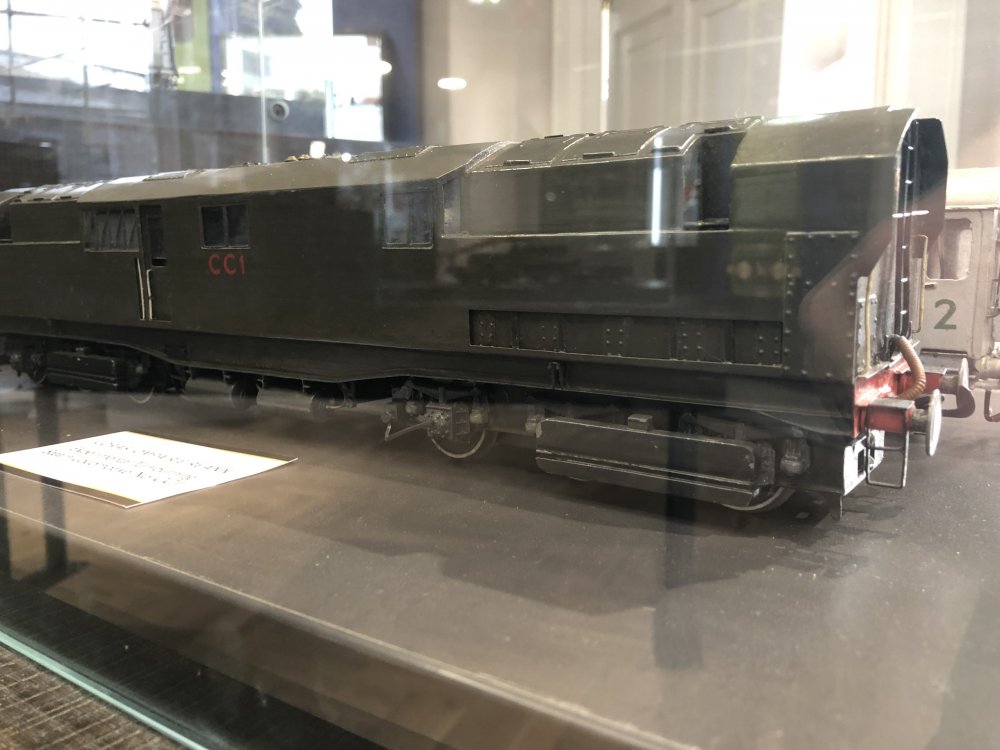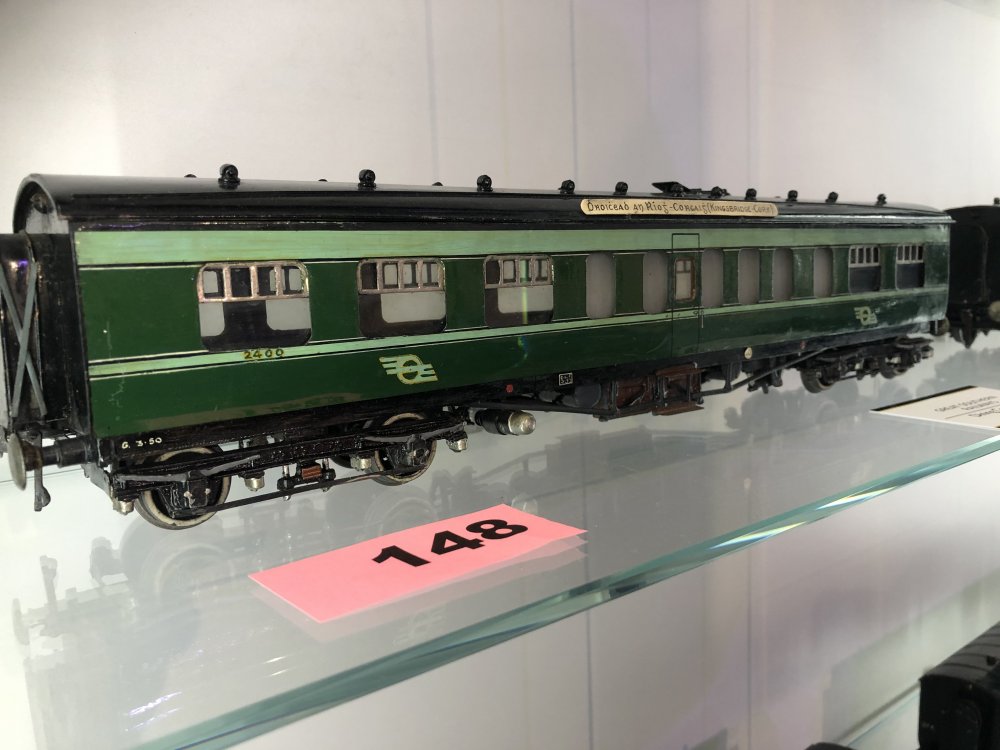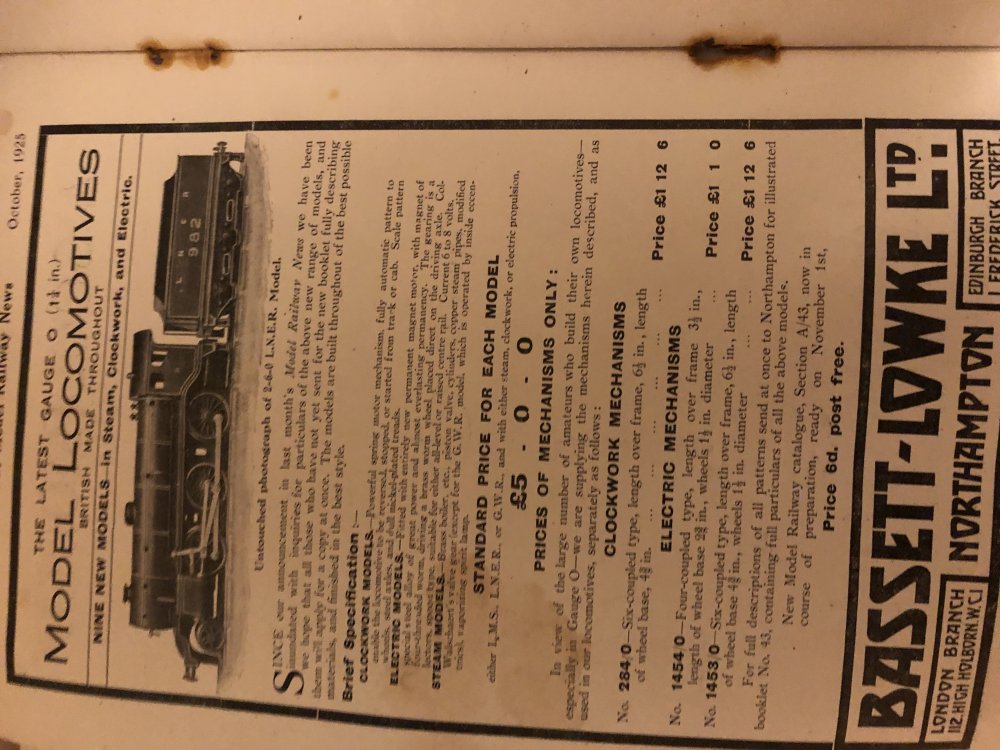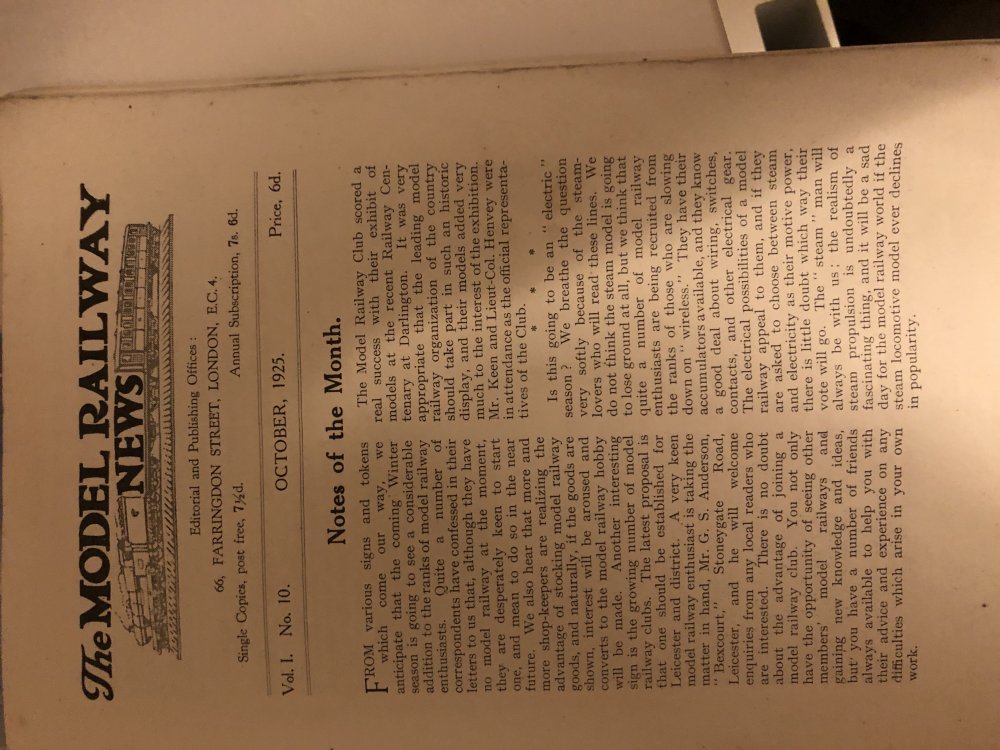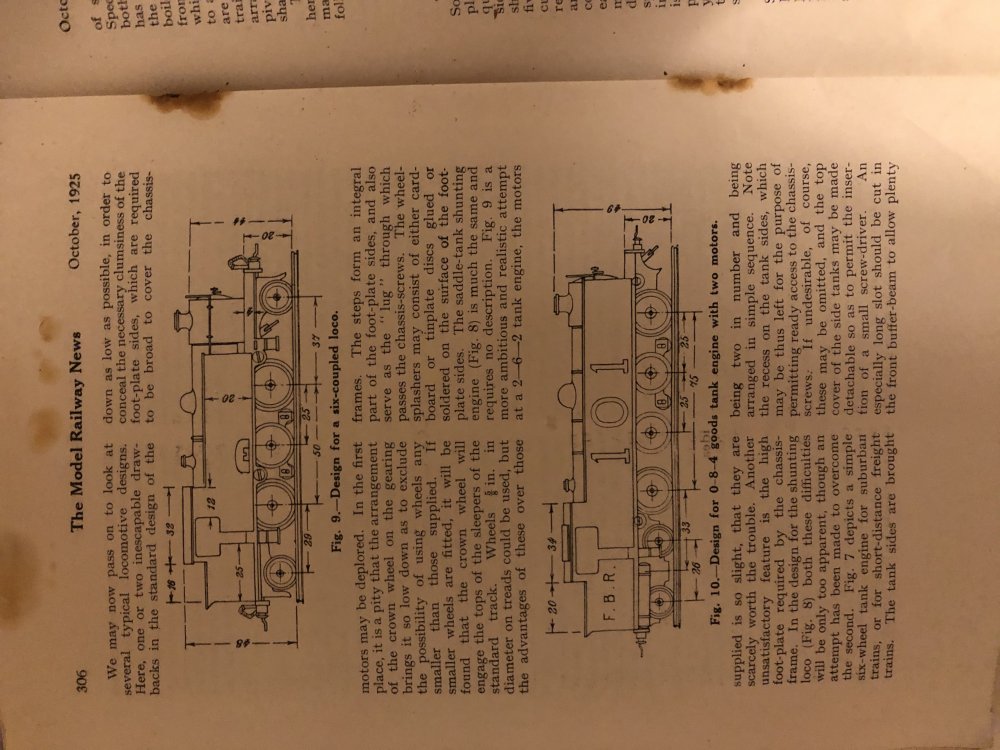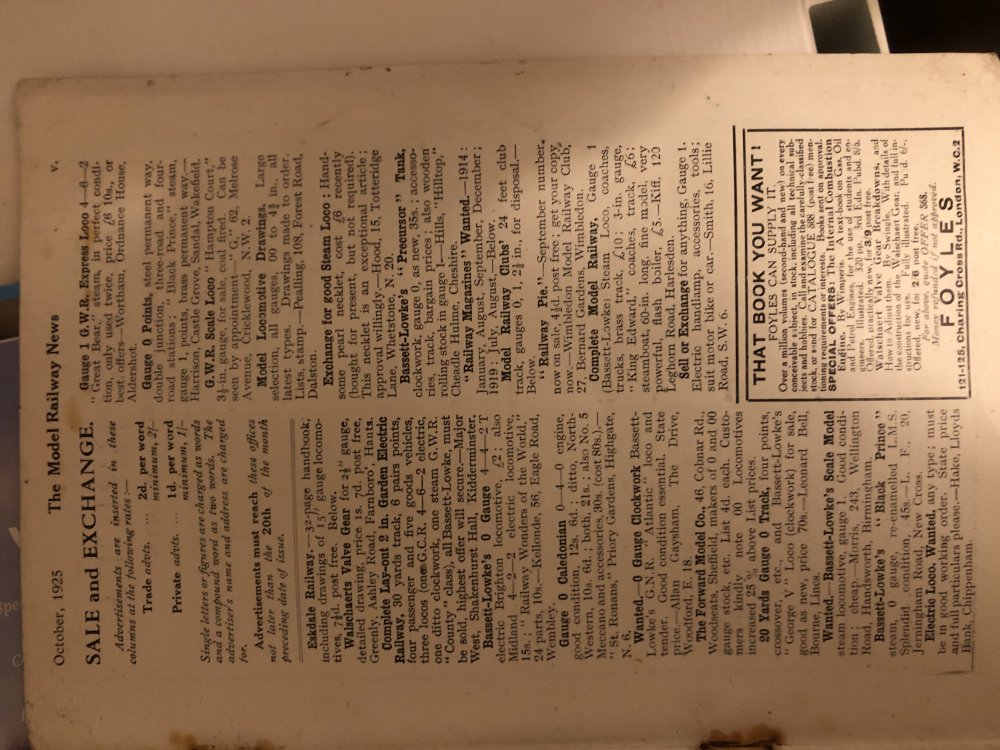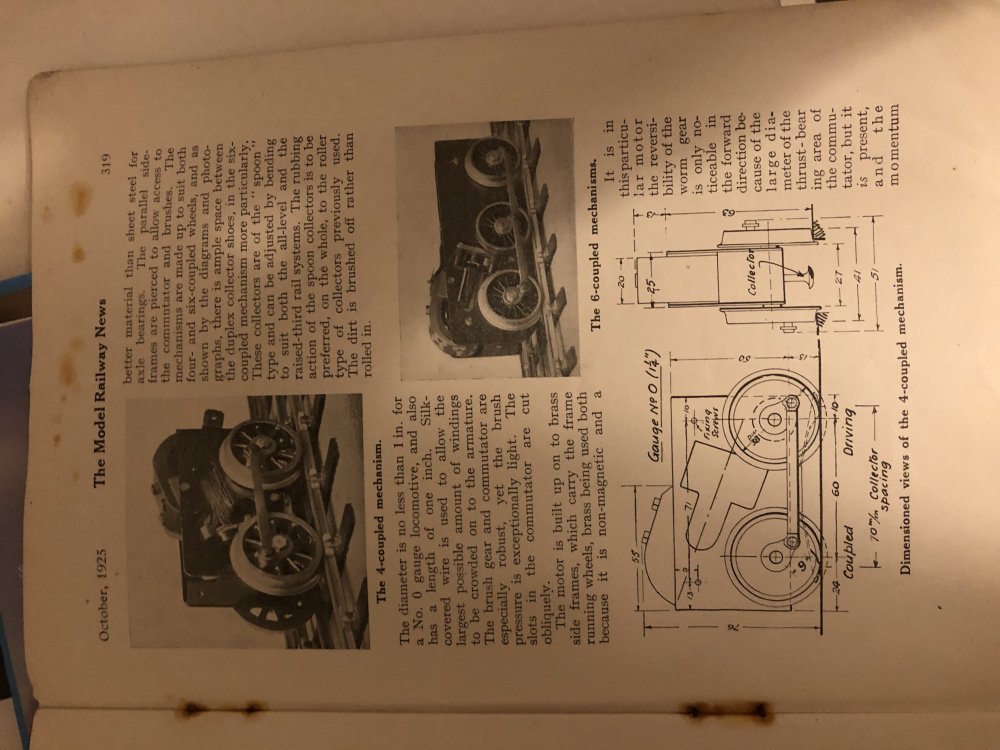-
Posts
15,873 -
Joined
-
Last visited
-
Days Won
393
Content Type
Profiles
Forums
Events
Gallery
Everything posted by jhb171achill
-
That book will tell you absolute chapter and verse on all that sort of thing! A stupendous work, often referred to in jhb171 Towers.
-
Hi Dart Its going to be open 7 days a week, as I understand. It’s first full day will be Wednesday. Not sure of price, but opening hours will be something along the lines of 09:30-17:00. To address your queries..... 1. None of the actual Fry models ever ran in the castle. I totally agree with you that it’s a pity we can’t see that, but (a) he wanted them kept as exhibits even in the old place, (b) some are already worn out and / or not in working order, and (c) those that are presumed to still be in working order would end up becoming worn out after a very short time operating. 2. What I call the “Castle” models - the ones that DID run in the castle - these were purpose built in the 1980s primarily by the late Tommy Tighe, but also several other people. There is a circuit of elevated gauge 1 track on which a train from those pieces will continually go round. Initially this will be the 071 plus a few Mk 2s. This will be rotated from time to time. 3. The old castle layout is in pieces in storage - I believe they’re up in the castle. There’s no room for this. Again, it’s a matter of record that this layout was again, not Fry’s, but purpose built; this is not in any way to take away from it - it was truly superb - but again, the museum is specifically about the Fry collection. 4. There is no room in the building for a layout larger than 00 gauge. This was pointed out to the local authority and architects at an early stage, but evidently all the usual stuff about funding, access, listed building issues and so on, precluded any bigger building. Even for 0 gauge, there isn’t enough room. 5. I’m unaware if the original track still exists, and I haven’t seen any signalling bits at all. At some stage I will be up in the castle and I’ll look for it there, but I haven’t seen any yet, from either the Fry layout or the Castle one. I could stand to be corrected, but I doubt if it’s survived. We’ll see - this will be a project for another day. 6. You are right in saying that locos, coaches and wagons are on display. In fact, every single Irish piece he made, bar about 6, are permanently displayed. These few are duplicates, e.g. where he made more than one model of a particular type. 7. Buildings and “props”. There is simply no room for any of this at the moment, but I have made a strong case that they need to get more cabinets. This would allow a display of a selection of these items, though it’s not easy to tell whether some of them are “Fry” or “Castle”. So, I suppose that “it is what it is”. Personally, after initial reservations when I heard what the plans would be, I think it’s an excellent attraction overall. It’s very different from what was in the castle, but it will, I feel, make for a very interesting place to visit. Access is easy enough. It’s 2 minutes’ walk from the station, and there’s disabled parking on site (or that’s the plan, I think). There’s a public car park directly across the road.
-
This amused me so much that I had to reach for my smelling salts and go to the Water Closet!
-
Some points about the comments above. 1. The likes of us here know very well that the entire collection of models consists of several distinct groups: (a) Fry-built Irish models (b) Fry-built non-Irish models (c) Models NOT built by Fry (d) "Bought" stuff, like a couple of very nice SSM kits, a few Alphagrafix, and some old coarse=scale Hornby "0" gauge models. The display in Malahide has group (a) as permanent fixtures, and there is one case with several corresponding to (b), which may be rotated. I have suggested another case, in particular for a lovely set of LNWR loco and carriages, but that's for the future. 2. Since the museum is FRY-related, none of (c) and (d) are to be displayed, although there's nothing to stop a specialised exhibition of them some time. 3. The public will need to be educated, and Mr Fry's daughter is very keen on this (and I agree with her), that what ran on the so-called "Fry Model Railway" in Malahide Castle was NOT either Fry's models OR his layout. There is a widespread perception that they were. After C L Fry died, his will stated that his models were to be exhibited but never run again. This was but one of the matters that formed the background to the new models being built for the castle. 4. Since the new place is specifically dedicated to Fry, there has been no decision made yet as to what happens to the non-Fry collection. I have offered Fingal Council to go through this lot, sort it and label it all for storage, but I've only done a bit of this yet - that doesn't need to be done by Tuesday evening! The ex-castle-non-Fry stuff is now the property of Fingal Council, who own the new Casino Museum. They have hired Shannon Heritage, who run Malahide Castle as well, plus other tourists attractions like Bunratty Castle and Folk Park, to operate it.
-
I knew I wasn't dreaming, when I wrote that not all Bells had white roofs - initially, none had white roofs, though it's clear from later photos that most DID. The vans are interesting too. Left - a standard CIE "H" van. Right - what looks like a 1954-built GNR cement van. Loads of these were built for the Cement factory branch; steam-hauled initially, of course.
-
With the loco in "Supertrain" livery, you're looking at 1972-87. I'd say mid-70s probably, as I think the B & I ones weren't in that livery by 1987, if they were even on the railways at all.... I'll try to find it, though the one above is a much better shot than mine! As far as I recall, the only other place I saw a Lyons container on a 4w flat was in Heuston goods yard, where the car park is now. Aha! Look at the 4w flat it's sitting on - silver! Painted thus for Asahi containers.
-
I took a pic of one of those navy blue Lyons ones in Limerick about 1976, but I'm 99.999% certain none of the Jacobs ones (other than the small boxes) ever went by rail. If someone might show otherwise I'd be interested to know.
-
Is that a manure wagon?
-
Test runs today. A DWWR 071 rounds Bray Head and Dublin & Drogheda Railway No. 082 potters into Malahide, as the driver has been told that Baseboard Dave still has some cake from upstairs.....
-
-
- 8
-

-
I will correct my post above. I was thinking of the J30 class steam engines.... I will rephrase my FIRST sentence above by saying that I am UNAWARE of a G going to Mitchelstown! As already mentioned, it closed in 1954, a year before the first three G's came, so I'm not sure. If anyone else can confirm, please do. My other comments about their wanderings stand.... I'm getting old and senile.
-
It did. One was trialled on it when they very briefly reopened it for goods. I’ve a nite somewhere of which one. I was unaware of the forays to Kilmessan, but now that you mention it, I remember the article. In 1962/3, G’s briefly shunted Dundalk and Ballina, and of course for many years Tuam BFS and factory. It is likely, therefore that one would have shunted Galway at some stage.
-
Yes, and trials at Foynes... but they also shunted here and there, as did the G611s. I think one of the 601s also did a stint on the Banagher branch, and Mitchelstown as well. One spent some time shunting Glanmire Road too, though I have no evidence of it ever going across to Albert Quay. They would have been as useless as shunters as they were as branch engines! Having driven one myself, I can attest to what others know anyway - they can't pull this skin off a rice pudding, and while you can get them going, if they've anything more than two bogies behind them, they sometimes don't like stopping.....
-
Rachelstown and St Stephens Green
jhb171achill replied to The Derry Road's topic in Irish Model Layouts
A gricer-spider.... -
I wonder where Sharman's layout is now?
-
At least late 80s, I suspect. The red and yellow Freightliner livery on those containers way up the far end would suggest this. An essential for the 1970s would be B & I Line containers......
-
Theoretically do-able indeed, and what an interesting thing it would be. About fifty years ago I read an article about a man in England (I believe his name was Mike Sharman) who had (WELL ahead of his time) built a layout based on the very early GWR broad gauge. Naturally, like Cyril Fry he had to make everything from scratch himself. So, a D & K layout with original-type track, original Westland Row and do in, would be quite a thing of beauty! Waterford & Tramore, LLSR broad gauge, Finn Valley Railway, Dublin & Meath, and of course the Ulster Railway would be great fodder for a layout too.... Fry has a beautiful model of an Ulster Railway 0.4.2 in GNR green livery in his collection.... Other "old" stuff in the display are two W & T locos, a Dublin & Drogheda one, and a little beauty from the Ballymena, Cushendall & Red Bay Railway.
-
It absolutely is. The entire collection consists of the following. 1. Irish prototypes made by Fry 2. NON-Irish prototypes made by Fry - the bulk being ex-LNWR and some LMS, LNER and GWR locomotives and coaches, but with some continental and USA examples as well. 3. No more than one or two fictitious vehicles made by Fry. e.g. a very continental-looking coach (a bought model) painted in GSR livery by Fry 4. Irish prototypes made by other people for the Malahide Castle layout (long after fry's time; these were made by Inchicore man Tonny Tighe, Des McGlynn, and Harry Connaghton. 5. Bought models (e.g. Hornby wagons). Most of these non-hand-made vehicles are British wagons made by Hornby in the 1950s. Some are in poor order. 6 Scenic items and road vehicles, both "bought" and home-made. The display is based on Fry's Irish stuff, thus (1) is entirely on display, bar two or three duplicate vehicles where he built more than one example of the same vehicle. At any one time, a few of (2) are also on display. Lists 3-6 as above are in storage. With 3-5 being nothing to do with Fry himself or his layout these items will eventually be carefully stored away in air-proof boxes until or unless some future use may be found for them. I have suggested to the organisers that they ought to get one more cabinet (though it's hard to see where they'd put it) to rotate a full "Irish Mail" LNWR train and a selection of his road vehicles and scenic items. The organisers are considering a book about Fry's photographic collection, and also featuring his models as a guide book which they would sell at the Malahide complex. If they decide to do that, I'll probably get that done over the summer. That's about it - my next "consulting" museum thing will relate to a new canal museum in the north........
-
Nearly there. Met Patricia, Cyril Fry’s daughter today. Hopefully she might attend the opening.....: Theres an “invitation only” opening next Tuesday evening and it fully opens to the public on Wednesday 22nd.
- 91 replies
-
- 13
-

-

-

-
Going through the last remnants of my grandfather’s stuff, I find this. Interesting stuff, interesting for the time. Anyone want it? €10 including postage Ireland or U.K. I also have a pile of 0 gauge coarse scale track. It’s off senior’s long-defunct attic railway. €25.
-
- 2
-

-
Didn’t know you were doing MGWR times! Irrespective of anything, though, an extremely excellently done model. Actually, your model is of a fairly common type of MGWR water / coal facility. I wonder, though, does anyone have pics of GSWR or GNR equivalents?
-
If it's motorised, presumably it was built to operate - but did it? And if so, dare we wonder where the rolling stock is that ran with it?
-
Now THAT, Mr Holman, exceeds excellence! That brickwork is amazing, the whole thing looks SO realistic! The paintwork is just the right colour for 1950s CIE. In MGWR days it was red paint. The GSR used a darker green, but not on tanks, which I think were a dark grey. With CIE, some tanks were dark grey, others green just as above. Often it got faded to a wish-washy greenish colour with much rust showing.
-
Wowww!!! A Cork, Blackrock & Passage (narrow gauge) loco in original condition! Larger scale than 00, looks good.
.png.c363cdf5c3fb7955cd92a55eb6dbbae0.png)

